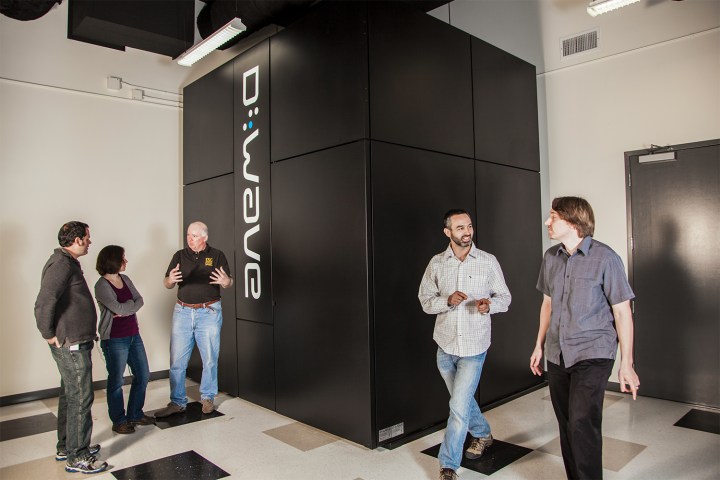
Early tests carried out by D-Wave apparently demonstrate performance improvements of up to 1,000 times beyond the 2X system.
“As the only company to have developed and commercialized a scaleable quantum computer,” said D-Wave’s vice president of systems, Jeremy Hilton, in a statement posted on the company’s website, “we’re continuing our record of rapid increases in the power of our systems, now up to 2,000 qubits.”
D-Wave claims that the new system will allow larger problems to be solved, and even goes so far as to say that the qubit count extends the company’s “significant lead over all quantum computing competitors.” However, many others working in the field would likely dispute that second point.
While D-Wave’s system beats out most other quantum computing projects in terms of qubit count, it’s not the same type of rig that academic groups and companies like IBM and Google are pursuing. D-Wave builds quantum annealers, which aren’t the same as a large-scale universal quantum computer — the ultimate goal of many experts working in the field.
The jury is out as to whether or not a quantum annealer actually provides much of an advantage over classical computers. A 2015 investigation by Google did find that D-Wave’s technology offers speed increases on certain tasks, according to a report from Tom’s Hardware, but there are still lingering doubts about the scope of work that the hardware is suited to.
The applications of a quantum annealer are largely related to optimization — Lockheed Martin utilizes a D-Wave system to help with high-level scheduling and planning. A large-scale universal quantum computer, on the other hand, would have capabilities far beyond that of an annealer.
Nevertheless, the fact that D-Wave has upped the qubit count of its annealer to 2,000 is a worthy achievement in its own right. The new control features being introduced alongside this new system could also offer some potent improvements in terms of efficiency.
However, the idea that the company is leading the charge in terms of quantum computing as a whole is more marketing bluster than an accurate portrayal of current state of play.
Editors' Recommendations
- Scientists just achieved a breakthrough in quantum computing
- AMD’s 3D-stacked Ryzen 7 5800X3D is ‘world’s fastest gaming processor’
- Researchers create ‘missing jigsaw piece’ in development of quantum computing
- IBM is building the biggest quantum computer — and a giant fridge to put it in
- Microsoft’s plan to scrub carbon out of the atmosphere? Quantum computers


